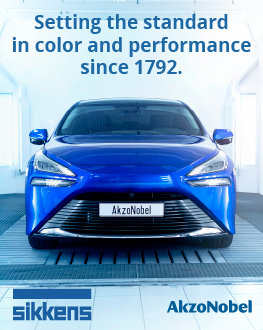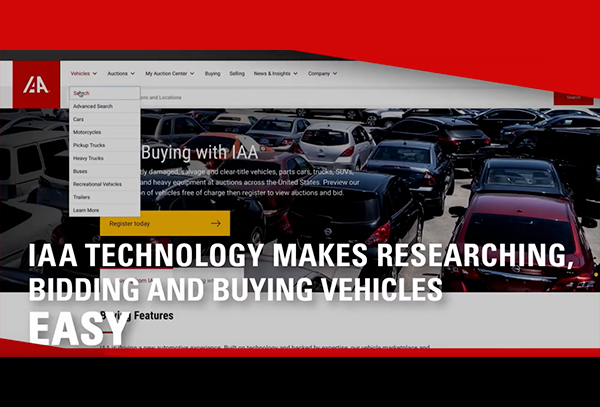By ‘Forty’, a Progressive Estimator
I would like for Canada’s progressive collision sector workers to face-up to a problem that is affecting every shop in the country—whether or not it is realized.
This issue is taking away from the bottom line of businesses.
The issue? Travel to sublet.
Travel to sublet exists in two forms. The first is driving a vehicle to a sublet, and the second is towing to sublet.
I highly suggest towing both ways.
A travel to sublet involves the organization of two human resources and a company asset—the shuttle—that are entering the roadway with a vehicle which has most likely already been deemed unsafe for the insured to drive.
Why should you subject yourselves to the potential liability without any fair compensation?
The two vehicles and human resources are now the liability of your insurance policy. Why would you put one of your own behind the wheel of a vehicle that does not have the SRS or ADAS system functioning properly? Why would you leave the opportunity for an upset customer to call you and ask why you allowed their vehicle to leave the building without their prior authorization? How do you deal with the repairs when your 20-year-old detailer gets rear-ended and injured while delivering a customer’s $80,000.00 Mercedes? Who wants to make the phone call to that customer to explain what happened?
This whole scenario is a ticking time bomb waiting to explode.
We are professionals at repairing vehicles, not at driving them to sublet vendors. Nowhere in the curriculum for the 310B is any testing or teachings on how to drive to a dealer and back, free of charge.
If you decide to deliver the cars yourself, you should get reimbursed for your time.
Remember that this is two people delivering a car to a sublet, then returning to the shop. Picking up the vehicle at the end of the sublet calls for the second calculation to be used and added to the estimate. Why would we accept a labour rate that is below where it should be and then do it for actual time as well? Overhead costs are creeping higher and higher each day. We need to turn these cost centres around into an area that we make money again.
I am willing to bet that nobody reading this is “in the business to lose money.” Feel free to let me know if you are though!
If you were reimbursed by this calculation would you be willing to send your valuable human resources out into the streets? Would you still refuse to allow any potential liability to fall on you and insist in a tow to and from sublet? I still believe that towing to and from is a reasonable substitute.
Never subjecting ourselves to the liability of driving a vehicle without reimbursement puts a new opportunity back in our court.
What do you think of this topic? I want to hear your thoughts. I want to hear your opinion on travel to sublet and so many more areas of this industry. Head to the Collisionrepairmag.com website and make a comment on this article.
Use the name anonymous if that makes you feel comfortable. Most importantly, add travel to sublet to your estimates immediately, and start to feel the power of what we can all achieve together as a unified front of progressive estimators.
Be calm, professional and ready to create the changes this industry requires.
The Solution
A formula that respects that you are not in business to lose money. A formula that allows you to pay your men for the time and liability invested. But most importantly this is a solution to another one of the endless issues that our insurance partners consider to be “the cost of doing business.”
To the dealer once—(Google maps time X 4) +( 15 mins)) X 150 percent = travel to sublet
To and from the dealer—(Google maps time X 8) +( 15 mins)) X 150 percent = travel to sublet
Explained:
Google maps should be the base factor for in-seat travel time. Use this to start, if Google Maps suggests 12 minutes, then 12 minutes it is. This is a repeatable standard with small variance. This isn’t perfect, but it is somewhere to start.
The additional 15 minutes represents finding two people to do the delivery, build the plan of what car goes where, it allows time to warm up the vehicle if required and hand the keys to the correct service advisor once arriving. It all takes time!
150 percent is the efficiency that we look to make while on the job. This is somewhere to start and we believe it to be fair.
Ex. 18 minutes to destination
“X4” This allows two men to drive there and back. 18 minutes for two people = 32 Minutes one way. That is 64 minutes total in-seat time. Remember, you were doing this for free before!
“X8” This allows two men to drive there and back, twice. Once to drop off the car and once to pick it back up. 18 minutes for two people = 32 Minutes one way. That is 64 minutes total in-seat time. Remember, you were doing this for free before!
If you enjoyed this article, please keep an eye on future content by ‘Forty,’ the Progressive Estimator of Canada. Also please drop a comment below the online article—I want to hear your feedback. I want to hear what issues you are experiencing. I want to hear what you think of my vision. Most importantly I want to create a unified front that works together to change this industry for the better.








































One Response
Great article! A very logical and fair solution to look at an industry issue.